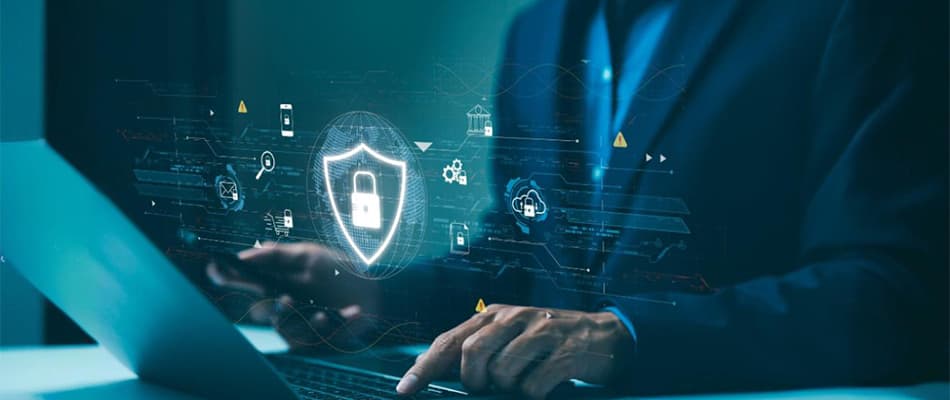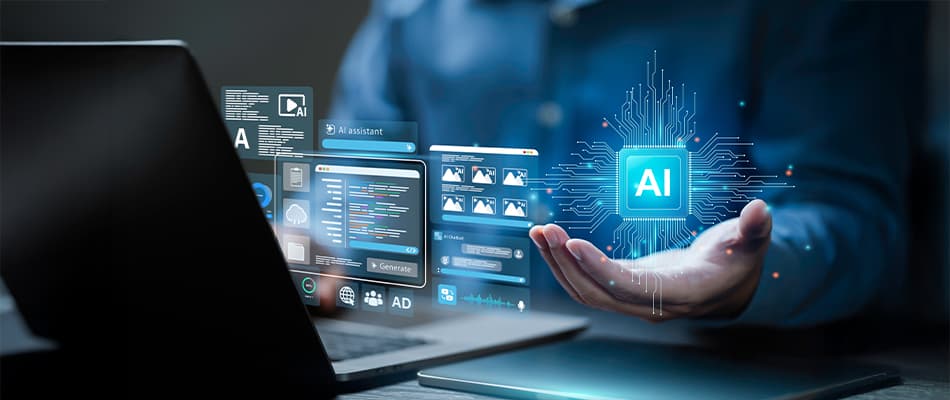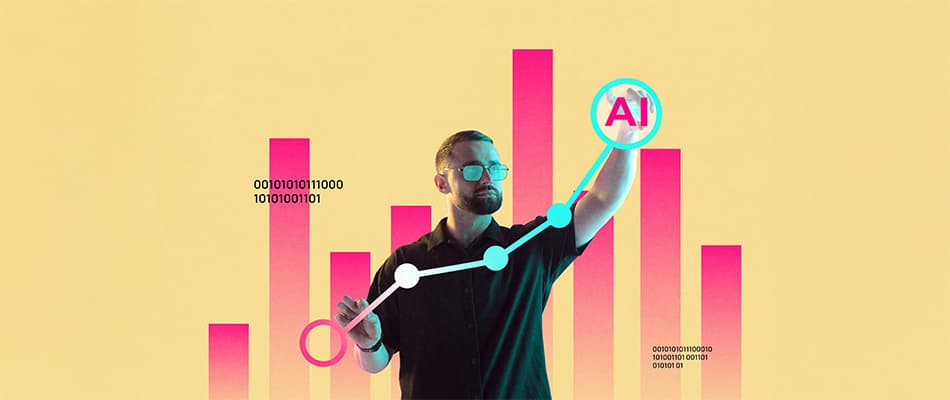What Is AI in Cybersecurity? A Beginner’s Guide (2026 Edition)
Think about the amount of data created every second – messages, transactions, logins, and online activity. Now imagine trying to protect all of that from cybercriminals. That’s where Artificial Intelligence (AI) steps in.
AI in cybersecurity refers to the use of intelligent algorithms to detect, prevent, and respond to digital threats more efficiently than humans can. It learns from data, recognises suspicious behaviour, and reacts in real time.
In this article, you’ll learn how artificial intelligence cybersecurity applications are reshaping online safety. We will also explore the role of AI in cybersecurity today, and the exciting AI cybersecurity trends in 2026 that are changing how organisations protect themselves.
Why is AI Critical for Cybersecurity Today?
Cyber threats are no longer simple. Attackers now use automation, deepfakes, and AI tools to bypass traditional defences. Manual systems simply can’t keep up. That’s why AI is becoming the most reliable shield against these modern risks.
The role of AI in cybersecurity is to analyse massive data sets, identify unusual behaviour, and respond to attacks in seconds. It continuously learns, adapts, and becomes smarter after every incident – something human teams alone can’t achieve.
Here’s why AI is essential for today’s cybersecurity:
- Detects hidden threats that escape traditional security systems.
- Reduces false positives with intelligent data analysis.
- Predicts potential attacks before they happen.
- Minimises human error in large-scale operations.
- Keeps businesses proactive instead of reactive.
Understand the basics of – What is a Large Language Model (LLM)?

Key Applications of AI in Cybersecurity
AI isn’t just a concept; it’s working behind the scenes in every major security system today. From detecting phishing to spotting insider threats, AI helps organisations protect sensitive data and maintain trust.
These artificial intelligence cybersecurity applications are at the heart of modern defence strategies:
- Threat Detection and Response: AI scans millions of data points to instantly flag abnormal patterns.
- Fraud Prevention: Machine learning models identify suspicious financial or behavioural activity.
- Email and Phishing Security: Natural language processing detects fraudulent messages or attachments.
- Endpoint and Network Protection: AI tools monitor devices, servers, and networks for unusual logins or intrusions.
- Predictive Analytics: AI predicts potential attacks by learning from past threat data.
The role of AI in cybersecurity extends beyond detection and prevention. It creates an automated, always-on defence system that continually learns.
Benefits & Value for Organisations
The primary advantage of AI in cybersecurity is its ability to transform data into actionable insights. It doesn’t just protect systems; it transforms how teams respond to risks, allocate resources, and plan for the future.
For businesses, embracing these AI cybersecurity trends in 2026 means faster detection, stronger compliance, and reduced costs. It also gives customers confidence that their information is safe.
Here’s how AI adds measurable value:
- Speeds up incident response from hours to seconds.
- Automates repetitive threat-hunting tasks.
- Reduces security costs while improving efficiency.
- Provides real-time risk intelligence for better decisions.
- Builds stronger brand trust through data protection.
AI is now a business enabler – not just a defence mechanism.
Explore details on – CISO Salary in South Africa: 2026 Earnings, Career Path & Skills.

Risks & Challenges of Using AI in Cybersecurity
Despite its potential, AI isn’t a magic solution. If used poorly, it can also introduce new risks. Attackers are already experimenting with AI cybersecurity trends in 2026, using automation and deep learning to create smarter attacks.
These risks make it vital for businesses to stay cautious:
- Cost and Complexity: Implementing AI tools can be expensive and require specialised talent.
- Model Bias: AI systems may misinterpret data, leading to false alerts.
- Privacy Issues: Training models often involves the use of sensitive information.
- Over-automation: Relying too heavily on machines can lead to oversight failures.
- AI-Powered Threats: Hackers now utilise AI to develop adaptive, rapidly evolving attacks.
Balancing human oversight with automation is key to using AI safely and effectively in cybersecurity.
What Organisations Should Do to Adopt AI Securely?
AI adoption is most effective when it’s strategic, ethical, and continuous. Businesses need a roadmap that ensures technology is used responsibly while keeping data privacy intact.
Here’s how organisations can adopt artificial intelligence cybersecurity applications safely:
- Define a clear cybersecurity framework before implementing AI tools.
- Train teams on AI operations, bias, and ethical usage.
- Regularly test and audit AI systems for weaknesses.
- Integrate human-in-the-loop monitoring for accountability.
- Stay informed about AI cybersecurity trends in 2026 to anticipate emerging risks.
The goal is to build a defence system where AI and human intelligence work together for smarter, safer operations.
Learn Why Enrolling in an Online Cybersecurity Short Course is Important.

Digital Regenesys: Learn the Future of Cybersecurity with AI
Want to explore how AI is shaping cybersecurity careers? The Cybersecurity Certificate Course at Digital Regenesys is designed to help professionals understand this powerful intersection.
You’ll learn how AI algorithms detect threats, automate responses, and strengthen digital infrastructures. The course includes real-world simulations, hands-on projects, and expert-led modules that prepare you for today’s evolving tech landscape.
Contact us to speak to a career advisor.
Conclusion: The Future of Security Is Intelligent
AI in cybersecurity is transforming how we detect, predict, and respond to digital risks. From automated defences to predictive analytics, it enables organisations to act before a threat causes harm.
As AI cybersecurity trends in 2026 continue to evolve, professionals who understand this technology will lead the next wave of innovation. Whether you’re protecting data or advancing your career, AI is your strongest ally in building a safer digital future.
Take your next step – visit Digital Regenesys today and upgrade your cybersecurity skills for 2026 and beyond.
FAQs
What does the phrase “AI in cybersecurity” mean?
It refers to using artificial intelligence and machine learning to detect, analyse, and prevent cyber threats in real time
How is AI used to detect cyber threats?
AI tools scan data, identify anomalies, and flag suspicious activity more quickly than traditional security methods.
Can AI in cybersecurity also create new security risks?
Yes, if not appropriately monitored. AI systems can be exploited or make incorrect decisions without human oversight.
Do small businesses need AI for cybersecurity?
Definitely, AI solutions can help small businesses automate protection and reduce the cost of human-led security teams.
What skills are needed to work in AI-driven cybersecurity?
Professionals should learn data analysis, ethical hacking, and AI fundamentals to apply them in cybersecurity systems.













